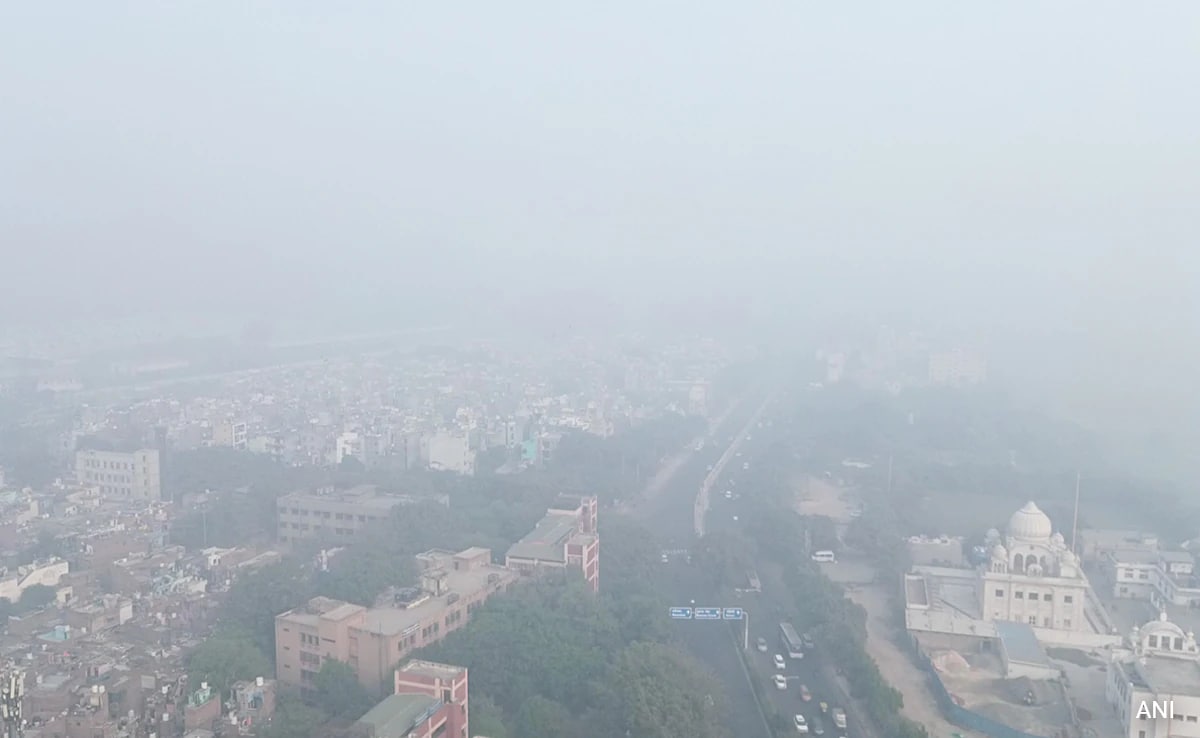A dense layer of smog continued to envelop Delhi on Sunday, with the air quality index (AQI) remaining in the ‘severe’ category for the fifth consecutive day. According to the System of Air Quality and Weather Forecasting and Research, the AQI in the national capital plunged to 428 this morning.
An AQI between zero and 50 is considered ‘good’, 51 and 100 ‘satisfactory’, 101 and 200 ‘moderate’, 201 and 300 ‘poor’, 301 and 400 ‘very poor’, 401 and 450 ‘severe’, and above 450 is ‘severe-plus’.
Of the 35 monitoring stations, most reported ‘severe’ air quality – Indira Gandhi International Airport (445), ITO (411), Anand Vihar (457), and Siri Fort (405), among others. The Jawaharlal Nehru Stadium monitoring station recorded 394 AQI under the ‘very poor’ category.
Visuals across the national capital show the national capital covered in a blanket of smog.
#WATCH | Delhi continues to be covered in a blanket of smog in the mornings as the Air Quality Index (AQI) continues to be in ‘Severe’ category in several areas as per the Central Pollution Control Board (CPCB).
(Visuals from New Delhi Railway Station) pic.twitter.com/IzUSX5SlpH
— ANI (@ANI) November 17, 2024
#WATCH | Delhi: Drone visuals from Mayur Vihar and surrounding areas as pollution levels continue to remain high. The AQI of Patparganj is 439 categorised as ‘Severe’ as per CPCB.
(Drone visuals shot at 7.30 am) pic.twitter.com/RneAcMPCsb
— ANI (@ANI) November 17, 2024
Over 30 trains coming to New Delhi and Anand Vihar Railway stations have been delayed given the smog conditions. According to officials, the trains are running late by two to nine hours. Additionally, all SpiceJet Airlines flights to and from Darbhanga have also been affected.
The wind conditions in the national capital also remained cold. According to the India Meteorological Department (IMD), the minimum temperature recorded in the morning was 15 degrees Celsius. The maximum temperature is expected to settle at 30 degrees Celsius.
Anti-Pollution Measures Imposed
On Friday, the Delhi government implemented stringent measures to curb pollution under Stage III of the Graded Response Action Plan (GRAP), in addition to the actions under Stage I and Stage II – which were invoked on October 15 and October 22 respectively.
Under GRAP-3, private BS III petrol and BS IV diesel vehicles have been banned. According to the government, violators will face penalties under Section 194(1) of the Motor Vehicle Act, 1988, which translates to a fine of Rs 20,000.
Within 24 hours of imposing the rules, the Delhi Traffic Police issued over 550 challans, imposing a total fine of over Rs 1 crore. Separately, they also issued challans to 4,855 vehicles imposing a total of Rs 4.8 crore in fines for not having Pollution Under Control Certificates (PUCC) in the national capital.
Additionally, under GRAP-3, the entry of interstate non-electric-CNG buses and certain categories of construction activities are prohibited.
Delhi Chief Minister Atishi also announced staggered timings for government offices in the city to ease pollution levels. While central government offices will operate from 9 am to 5:30 pm, Delhi government offices will function from 10 am to 6:30 pm. All the Municipal Corporation of Delhi (MCD) offices will work from 8:30 am to 5 pm.
All primary schools have also been shifted to online classes, the Chief Minister said.












